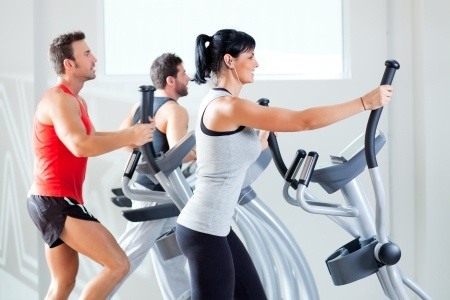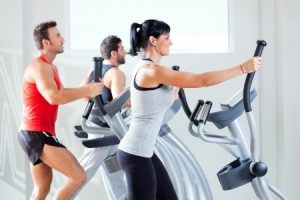
Walking and using the elliptical machine are activities often employed as part of a general fitness program. While they are alike in many respects, it’s important to keep in mind that one might have an edge on the other depending on a client’s state of health and fitness goals.
According to several recent studies, elliptical training leads to a greater activation of muscles in the buttocks and thighs than does walking, but less activation in calf muscles.1,2 It’s important to note that training using the elliptical machine also puts greater strain on the lower back than walking. That’s due to how the sequence of how the muscles are recruited, and it’s a consideration for people with known back problems.
Movements on the elliptical machine also involve less weight bearing. According to one study, walking causes 112 percent of someone’s body weight to strike the ground with every step, while only 73 percent does in elliptical training.3 This might suggest that this comparatively less impactful activity is advantageous for people who experience joint soreness, but less may be less beneficial for people aiming to improve bone health.
In terms of energy use, walking and elliptical training are just about neck-and-neck: In one
 study, participants were asked to complete two 15-minute bouts of exercise, one on a treadmill, the other on an elliptical machine.4 In both exercises, they were told to maintain a pace that felt challenging, yet sustainable (or about a ‘4’ or ‘5’ on a 10-point intensity scale). During the course of each session, researchers looked at the participants’ energy consumption and found that it was the same no matter of which machine they happened to be using at the time. Intensity did matter, of course, but that was a factor controlled by the individual.
study, participants were asked to complete two 15-minute bouts of exercise, one on a treadmill, the other on an elliptical machine.4 In both exercises, they were told to maintain a pace that felt challenging, yet sustainable (or about a ‘4’ or ‘5’ on a 10-point intensity scale). During the course of each session, researchers looked at the participants’ energy consumption and found that it was the same no matter of which machine they happened to be using at the time. Intensity did matter, of course, but that was a factor controlled by the individual.
So, whether to walk or hit the elliptical may simply come down to what is most accessible and convenient. For clients with joint issues, the elliptical machine, with its less jarring movements, may be preferable. For those trying to bone health in part by the impact of the exercise, walking may hold a greater appeal.
And keep in mind that intensity is a major factor that can be varied in any exercise.
So if a brisk walk doesn’t seem as tiring as a session on the elliptical, maybe it’s time to pick up the pace, or to change the setting on the elliptical machine!
References:






